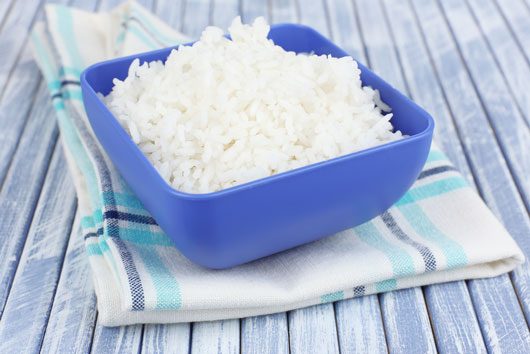
Here we go again: A new study from Consumer Report claims it found “significant” levels of inorganic arsenic in rice. The highest levels of arsenic were found in rice grown in the U.S. and in brown rice—the rice we were told up until now was the healthiest rice to eat.
If this is bad news for consumers, it’s worse news for Latinos who consume rice at a much higher rate than most other people except perhaps Asians. Yes, according to Consumer Report, the arroz con frijoles on your dinner plate is not as healthy as you thought. Even worse: it’s poisonous.
BUT IS IT REALLY?
According to the Food and Drug Administration, inorganic arsenic poses a high risk of cancer if consumed at high levels and over long periods of time. Arsenic occurs naturally and is a metallic element found in soil and water. According to the EPA, inorganic arsenic is formed when arsenic is combined with other elements, but it’s also an active ingredient in some pesticides. Rice, which is grown in soil with stagnant water, is particularly susceptible to absorbing chemicals from the water.
Read Related: The Latin Table Made Easy and Healthy
But wait. Didn’t the Dr. Oz Show release the results of their own investigation, which uncovered high levels of inorganic arsenic in apple juice? Consumer Report jumped on that wagon and ran their own tests and got the same results. The media flew with this. Consumers panicked. Babies and toddlers are huge consumers of apple juice in this country, making them potential victims of this poisonous juice.
SO WHAT HAPPENED?
We moved on. It seems that every study causes a panic and then dies down. No action taken. The apple juice still has arsenic. And toddlers drink it. Nobody makes a fuss.
While most of the rice grown in this country comes from Arkansas and California, Louisiana plants about 400,000 acres of rice. During the off-season many farmers harvest crawfish from their rice paddies. So does this mean crawfish also have high levels of inorganic arsenic? I hope not. I love crawfish. And I love rice.
It seems that in study after study researchers always find something harmful to our health. This is certainly no trivial matter. The FDA and the Department of Agriculture need to get to work on setting and monitoring acceptable limits of arsenic in our foods, but what about Genetically Modified foods and organisms, irradiated foods, artificial sweeteners and high fructose corn syrup, which researchers say is a significant contributor to the obesity trend in the U.S.?
Like the arsenic in the apple juice, the arsenic in rice findings is making the rounds in the media. Some headlines read: “Shocking Levels of Arsenic Found in Rice!” That will sell some newspapers for sure. We love a good drama, and the media knows it. But the fact is that we’ve been eating rice for centuries. Even Consumer Report tells us not to panic, to just moderate our consumption of rice. Well, isn’t that what our mami’s have always told us, “Everything in moderation, mi amor.”











